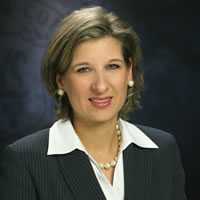Presidents say these new models could be the future of all colleges and universities in the next decade.
 [*Editor’s Note: This article appears in our March/April digital publication. See all the articles, as well as this month’s Symposium on “Whither Liberal Arts,” here:http://ecampusnews.eschoolmedia.com/current-issue/.]
[*Editor’s Note: This article appears in our March/April digital publication. See all the articles, as well as this month’s Symposium on “Whither Liberal Arts,” here:http://ecampusnews.eschoolmedia.com/current-issue/.]
A new think-tank-esque collection of leading college and university presidents came together to discuss the trends and disruptions shaping higher education, thanks to new technologies and the evolving global economy. Outside of just naming trends, they also predicted new models of higher-ed that may exist in the next 10 years.
The brainstorming made formal can be found in a series of papers called the Presidential Innovation Lab (PIL)White Paper Series, funded as part of a grant from the Bill & Melinda Gates Foundation and hosted by the American Council on Education (ACE).
Here, eCampus News asked seven of the participants part of the American Council on Education’s “Presidential Innovation Lab”—convened in the fall of 2013—to give their thoughts on the new college and university models of the future.
(Next page: Models 1-2)
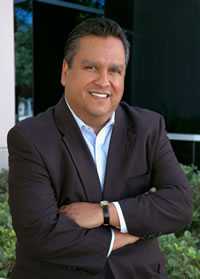 Personalized learning trumps all
Personalized learning trumps all
By Chris Bustamante, president of Rio Salado College
A redesign of the traditional higher education model is underway. Change-agent institutions that use data to drive evidence-based decision making are exploring and implementing next generation learning models and pushing beyond the limits of tradition. Student-centric institutions that are nimble enough to respond to the changing landscape of higher education are the colleges and universities of the future.
Higher education models of the future will be based in personalized learning, customized to the needs of the individual student. Predictive analytics will become a standard for learning management systems and support high-tech, high-touch outreach. Real-time dashboards will tell students how they are doing in their coursework and where they are on their pathway to a degree. These dashboards will also be visible to faculty and college staff, who can in turn encourage persistence through appropriate interventions.
As we move into the future the credit hour will continue to be used for administrative and financial purposes; however, learning models such as competency-based education which demonstrate improved student learning outcomes will replace seat time as a learning measurement. These learning models will also recognize learning that takes place outside the classroom and enable students to move forward in coursework at their own pace as they demonstrate content competency. In addition, credit awarded for prior learning will be widely recognized and more easily transferable between institutions nationwide.
As funding revenues continue to decline, institutions will reset their business models to include an increase in public and private partnerships to leverage resources from these relationships. We will also see a leveraging of resources across institutional boundaries and programming that avoids duplication within regional ecosystems of higher education.
Rio Salado College serves nearly 59,000 students annually with more than 30,000 students online. Dr. Bustamante is an advocate for increasing access to higher education and degree completion, and for forging partnerships with business, government, and other educational providers.
 A new American research university
A new American research university
By Michael Crow, president of Arizona State University
Change at research institutions over the course of the next decade will likely be only incremental. Despite the urgent need to provide advanced levels of education to a broader demographic sector, most research universities are content to maintain modest enrollments and turn away the majority of academically qualified applicants.
Transformation of American higher education is however the objective of the New American University model, which I envisioned when I became president of Arizona State University. At ASU I have led a comprehensive reconceptualization of the nation’s largest public research university to facilitate accessibility to a research-grade education. ASU serves as the foundational prototype for the New American University, which is predicated not only on academic excellence, but also inclusiveness to a broad demographic as well as maximum societal impact. The reconceptualization is discussed as a case study in the book I coauthored with William Dabars, Designing a New American University (Johns Hopkins University Press, 2015).
Accessibility to research-grade academic platforms is similarly the context for the formation of the University Innovation Alliance, a consortium of large public research universities that endeavors to promote student success, especially to socioeconomically disadvantaged students. In addition to ASU, our eleven member institutions include Ohio State and the University of Texas, Austin.
Dr. Crow became the 16th president of Arizona State University on July 1, 2002.
(Next page: Models 3-4)
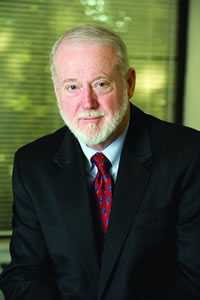 5 revamped models, and 1 new model
5 revamped models, and 1 new model
By John F. Ebersole, LpD, president of Excelsior College
1. Four-year community college: Florida and California have recently designated community colleges with specific expertise and reputation as bachelor’s degree granting institutions, in those fields. Students will benefit as they avoid the long vexing and costly problem of not having their lower division credits accepted.
2. Private systems: Following the decades-old model of hospitals, private colleges will increasingly move to merge and share services. Thanks to technology, geography and distance won’t be factors. Following in the footsteps of the Claremont Colleges and the Colleges of the Fenway, we are seeing a variety of affiliations occur; these range from sharing library resources, as Johns Hopkins does with smaller schools all over the U.S., to “takeovers” like those of John F. Kennedy University in California, and City University of Seattle, by National University.
3. Completion colleges: These mostly public institutions are not particularly new. Most were founded in the 1970s but have been recently “discovered” by the Lumina Foundation and others, as specialized sources of expertise in helping adult learners to complete degrees. Inexpensive and progressive, these niche colleges help adult transfer students who have accumulated credit and relevant experience but need guidance in terms of pulling it all together. With their focus on the working adult, these schools do not typically serve traditional aged students.
4. Flagship networks: This model is being pioneered by Northeastern University. Instruction is distributed from Boston to its growing number of “Graduate Centers.” A hybrid format combines face-to-face instruction with online. Centers now exist in North Carolina, Washington state and California.
5. The “franchise” model: Western Governors University (WGU) has established a network of state affiliations which are largely student recruitment vehicles, offering some localization. The states now on board include Indiana, Texas, Tennessee, Missouri, and Washington. Instruction primarily originates from the Utah campus for all.
6. New model—global university: A totally new model will be the emergence of the Global University Network through which U.S institutions will serve students in other parts of the world, and domestic students will have access to learning from abroad. With half the world’s population under the age of 25, access to higher education must take on new forms. Here may be a place for the next generation of MOOC.
Dr. Ebersole, president of Excelsior College, was a member of the inaugural American Council on Education “Presidential Innovation Lab,” convened in the fall of 2013. The imagining of new types of academic institutions was a part of this experience. This, and other, outcomes from the “Lab” are available on the ACE Web site.
By Shawntel Landry, provost and interim president of American College of Education
There are three key external pressures that will drive new institutional models. The first is the deflationary pressure on tuition. In the retail marketplace, a consumer wants to know what she is getting for her hard earned dollar. However, consumers of education (i.e. students) routinely purchase on name, family experience, and reputation. Yet, the student of the future will want more for less. This new mindset will drive down tuition rates of many institutions as students become more cost conscious.
Instinctually, colleges will then look to differentiate, which brings us to the second external pressure – better measurements of instructional outcomes. Currently, we measure institutions by faculty ratios, research dollars, and institutional statistics. But rarely do we see actual measurement of instructional outcomes. This will spark studies, debates, and a litany of attempts to best determine if the student is actually receiving the knowledge that she purchased at enrollment. In the end, schools will need to be able to prove that they are better than their peers at instructing students. They must prove that the education was worth what students paid.
Which gets us to the final pressure: The only way that any school will survive in this future is to embrace technology in the education process. There is no single capability that can reduce price and track instructional outcomes like technology. We must embrace this change and recognize that countless studies prove that when done properly remote learning gets the job done, and gets it done well. Effective use of technology for both college efficiencies and student learning will be key to the college that delivers on its promise. After all, the primary job of a college is to deliver on the mission of educating students, and that should take primacy over all else.
Dr. Landry has spent more than 20 years in education at both the classroom and administrative levels, and served as a curriculum development consultant for online schools.
(Next page: Models 5-7)
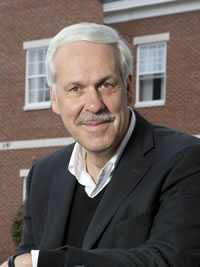 An unbundled learning eco-system
An unbundled learning eco-system
By Paul LeBlanc, president of Southern New Hampshire University
Competency based education (CBE) and micro-credentialing (giving credits and financial aid for learning that is less than a degree) will combine to change the face of higher education over the next ten years. We are shifting to outputs (the claims we make for student learning and how we know for sure), and when we make that final shift we will worry a lot less about how we get students there and more about what they actually know and can do with that knowledge. Then, a host of new delivery models, providers, and credentials will emerge. With clusters of competencies adding up to credentials of various levels, we will see portable, stackable, and just-in-time learning that often precedes (but leads to) a traditional degree and that frequently adds to a traditional degree as people continue to retool and learn at every stage of their lives.
Think of it as a new learning eco-system in which traditional higher education becomes unbundled, students construct their learning pathways (or have someone do it for them) in highly individualized ways, and those pathways draw upon various providers, forms of learning, and include a wider array of credentials all mapped to competencies.
Dr. LeBlanc is president of Southern New Hampshire University in Manchester, NH
By Robert Mendenhall, president and CEO of Western Governors University (WGU)
Over the next decade, there will be an increased emphasis in measuring learning rather than time and increasing accountability for learning results. Instead of progressing according to set course times, students advance as soon as they can demonstrate that they have mastered course subject matter. This model provides shorter times to graduation, saving students time and money. In addition, there will be an increased focus on tying competencies to industry needs. There will continue to be an increasing emphasis on ensuring the employability of graduates, and institutions will need to work closely with employers to create job-relevant programs.
Technology will take a leading role in the delivery of instruction. As competency-based models allow students to go at their own pace and in their own time, technology-based learning is the only option to individualize and personalize learning. As great technology-based courses are developed institutions will be able to share great courses to not only save money but create more consistent learning outcomes. Utilizing technology to deliver curriculum will also impact faculty roles: Rather than teaching a class of thirty (or 300), faculty will serve as mentors, answering questions and leading discussions. Faculty roles may be disaggregated into specialized expertise as few faculty members would be experts in instructional design, curriculum development, assessment development, and mentoring students.
Dr. Mendenhall is President and CEO of Western Governors University (WGU), a nonprofit online university founded by 19 U.S. governors in 1997. Now with more than 55,000 students in all 50 states, WGU says it is the leader and pioneer in competency-based learning.
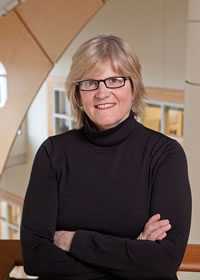 “Purposeful Work” for liberal arts
“Purposeful Work” for liberal arts
By Clayton Spencer, president of Bates College
Preparing students for lives of meaningful work has always been a powerful dimension of the liberal arts education we provide at Bates. However, in today’s world liberal arts institutions need to pursue this goal with greater intentionality and effectiveness. That’s why Bates has created the Purposeful Work Initiative that embeds questions of work and career into all aspects of our college experience, beginning with first-year orientation and continuing through senior year. Almost every college provides career counseling and helps students find internships, but Purposeful Work at Bates goes well beyond. Purposeful Work is developmental in its approach, incorporating cycles of exploration and reflection regarding questions of work and meaning, and touches upon all aspects of the student experience, including the curricular and co-curricular, athletics and residential life. During our five-week spring mini-semester, we offer courses taught by practitioners in such fields as digital innovation, entrepreneurship, urban planning and music production. We have a set of core employers who offer internships targeted at our students across a broad range of fields such as finance, communications, healthcare, and technology. This semester, more than 30 professors have incorporated exercises into their regular courses that allow students to explore the relationship between the course and work and career. The result is an approach to work that grounds practical experiences within the framework of the liberal arts so that our students graduate with the knowledge, skills and values they need to be effective and contributing members of society.
Dr. Spencer is the president of Bates College in Lewiston, Maine.
- 25 education trends for 2018 - January 1, 2018
- IT #1: 6 essential technologies on the higher ed horizon - December 27, 2017
- #3: 3 big ways today’s college students are different from just a decade ago - December 27, 2017

